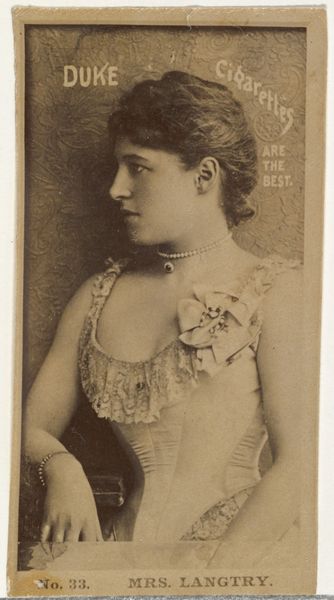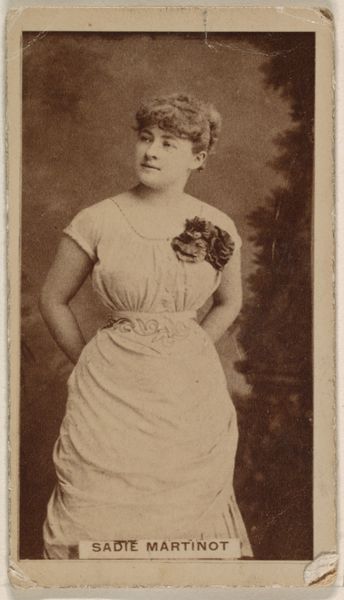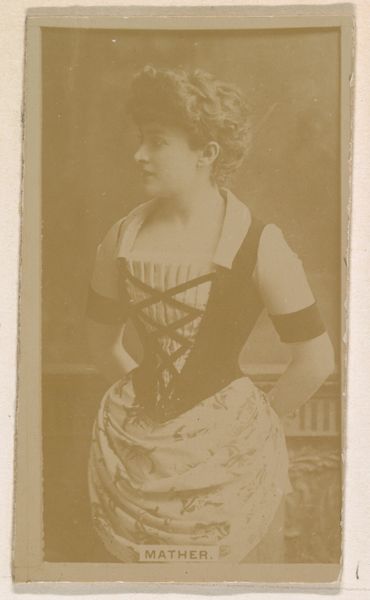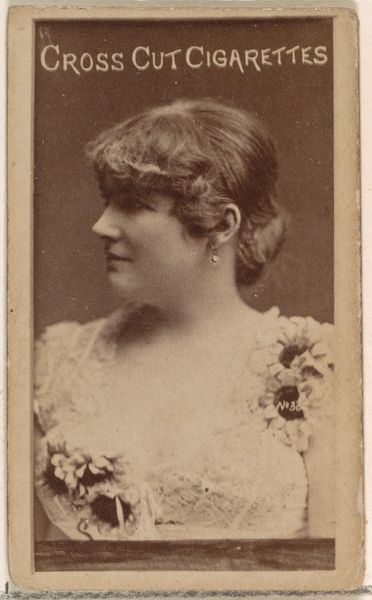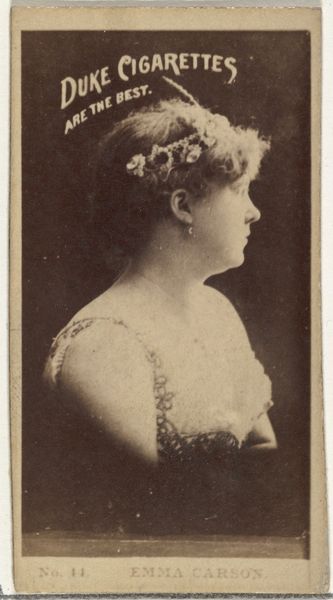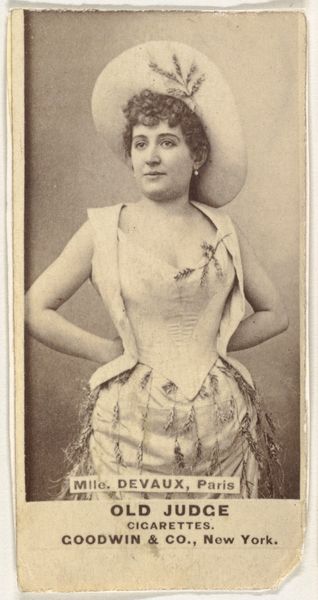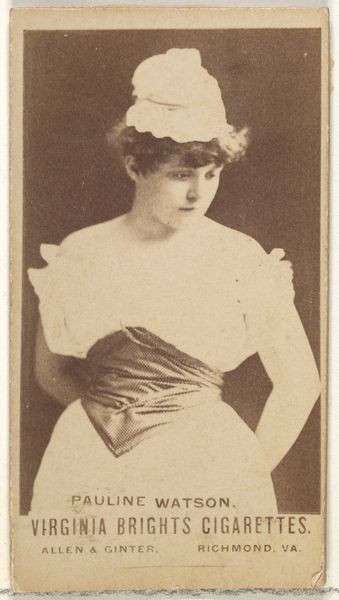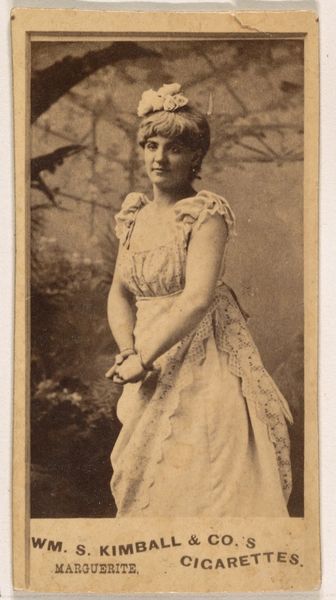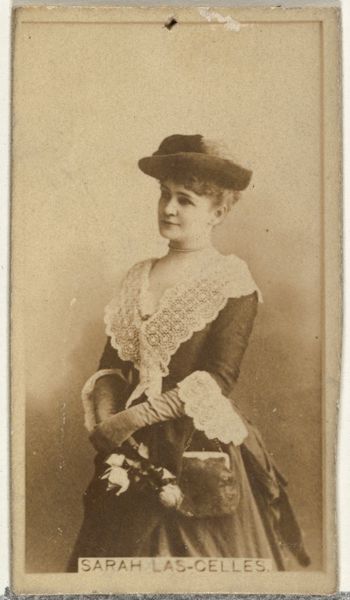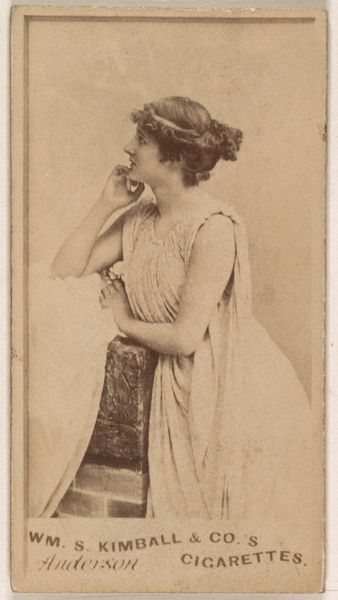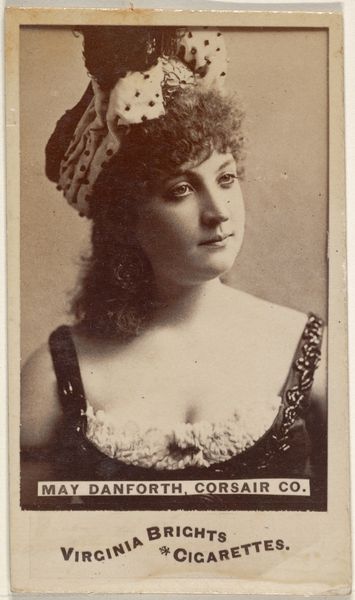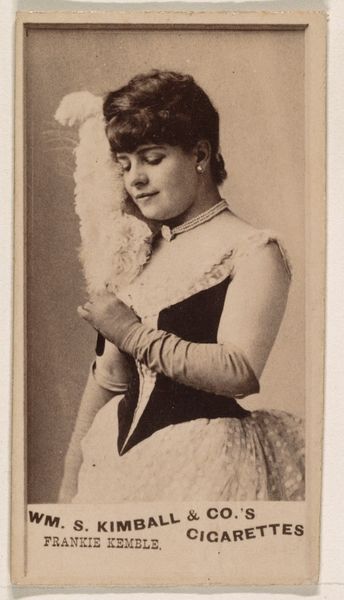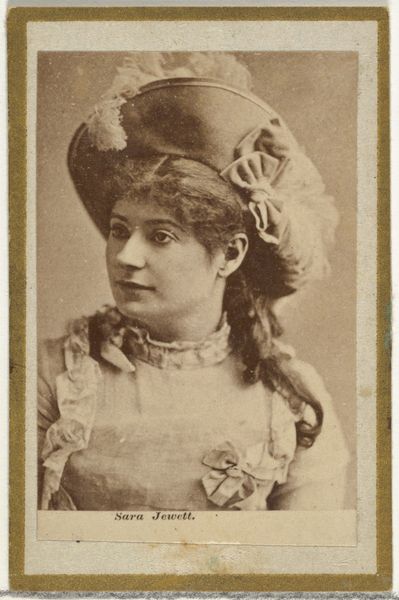
Miss Regnault, from the Actresses series (N245) issued by Kinney Brothers to promote Sweet Caporal Cigarettes 1890
0:00
0:00
print, photography
#
portrait
#
pictorialism
# print
#
impressionism
#
photography
#
historical photography
#
19th century
Dimensions: Sheet: 2 1/2 × 1 7/16 in. (6.4 × 3.7 cm)
Copyright: Public Domain
Curator: Here we have a photograph, "Miss Regnault, from the Actresses series (N245)" created around 1890 by the Kinney Brothers Tobacco Company. It’s part of a larger set of prints used as promotional material. Editor: It has a wistful and poised feel. The tonality and the soft focus definitely give it that 19th-century sensibility. I can imagine this tucked inside a pack of Sweet Caporal Cigarettes back in the day. Curator: Yes, and its very existence tells us a great deal about the culture of celebrity at the time and the role of consumerism in spreading visual representation of women in theatre, also consider that it also functioned as collectible item. Notice the composition and soft pictorialist aesthetic, which at that time was still an emerging and disputed trend that aspired to make photography more “artistic”, closer to painting. Editor: It makes you wonder about the specific actresses chosen for these cards and the criteria that positioned certain performers as "ideal" for promotional use. Who were they trying to reach? Were these actresses’ own views, and even consent, taken into account in how they were being framed, presented, and then marketed? The gaze and control are important to examine. Curator: These are excellent questions. When looking at symbols in this image, one notices that they function to convey a specific form of femininity and status to potential customers. The details are intriguing: the elaborate headdress and somewhat ambiguous, antiquated clothing. Were those part of a theatre costume or created only for these photographic cards? Are we looking at an actress playing a role of just “woman”? The choice of actresses connects with the historical cultural memory about representation. Editor: Right, the idea that this image—distributed so widely with cigarettes—is conveying more than just the likeness of an actress but is actually selling aspirations related to celebrity, performance, even ideal beauty standards. What happens when marketing begins shaping identity itself? Also, as it circulated, it would be layered and embedded with more meanings across various intersections of gender, class, and identity. Curator: Indeed, and perhaps one that we will continue to unpack now, having paused here to consider these deeper impressions together. Editor: Absolutely, let's remember this dialogue the next time we see marketing exploiting performers and, particularly, remember to ask ourselves who benefits from the circulation of their images.
Comments
No comments
Be the first to comment and join the conversation on the ultimate creative platform.

